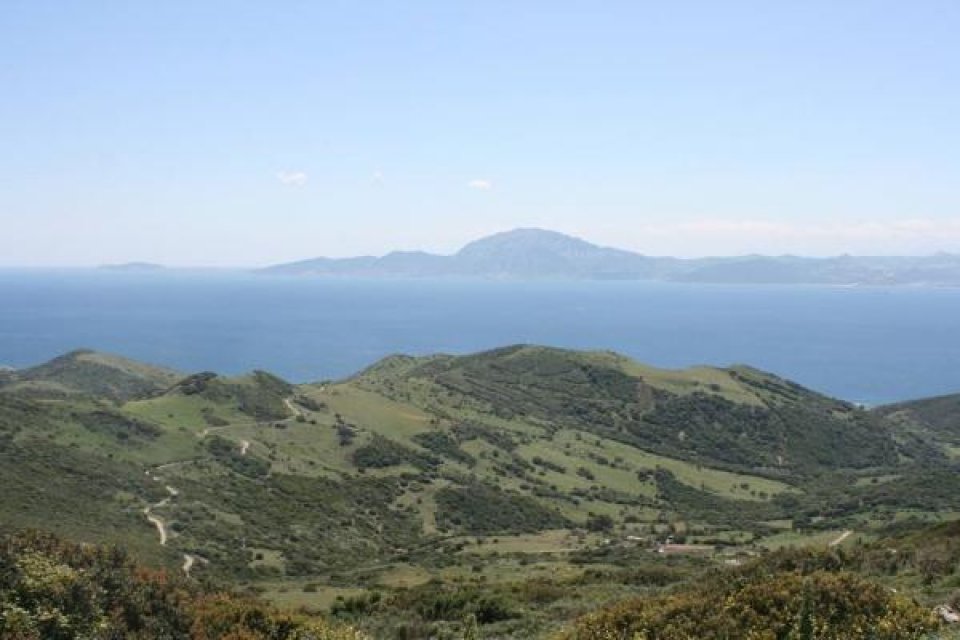
This reserve contains a high diversity of species on both shores due to the fact that is a migratory route between African and European continents. The area is characterised by 40 mammals species, 117 birds species, and shows high richness of reptiles (around 50 % of amphibians in the Morocco country are located in the northern part). Even though both sides of the IBRM share similar ecological characteristics, the human activities have shaped the landscape differently. Woodland/forest is the dominant ecosystem on both sides; however, in the Moroccan section agricultural land is extensively present as well. Almost 70% of the Spanish area and 30% of the Moroccan side is protected. Rapid socio-economic development and technological in this region has caused rapid population growth and significant expansion of economic activities.
Protecting areas to protect biodiversity: The IBRM is home to several remarkable protected sites, high biodiversity richness and an important cultural heritage. However, pressures from human activities in the area are threatening these distinct values. Our aim is to use diverse data plus stakeholder input to understand the social and ecological system and design a multifunctional network of areas – that allow conservation, exploitation and restoration - and identify ideal sites for restoring degraded freshwater, coastal and marine ecosystems.
In collaboration with regional and local governments of Andalusia (Spain) and Kingdom of Morocco, we applied the AQUACROSS Assessment Framework to identify the most effective and efficient network of multi-purpose protected areas (also known as Green and Blue Infrastructure). This included:
- Using satellite and local data to analyse regional activities, pressures, ecosystem condition, biodiversity, and key aquatic ecosystem services;
- Understanding stakeholder objectives (including economic objectives) for the IBRM to identify synergies, conflicts, and opportunities for improvement;
- Using models to identify the best location for protected and semi-protected areas, i.e where biodiversity is high or can be cheaply restored, whilst still allowing human activities (such as fishing or recreations) in neighbouring or other areas;
- Co-creation: local stakeholders reviewed and contributed at two rounds of workshops held in Tarifa (Spain, northern section) and Tangier (Morocco, southern section) .
We identified priority areas that allow conserving biodiversity, maintaining ecosystem services capacity, and restoring degraded ecosystems, while minimising costs. The results suggest that using ecosystem-based management restoration measures when designing Green and Blue Infrastructure may increase protected area coverage, while improving connections between protected areas.
- Better protection and restoration of coastal ecosystems
- Increase Biodiversity
This project is a Case Study under the Horizon 2020 project AQUACROSS, which builds on work undertaken in the previous pillars to develop concepts, practices and tools for better implementation of Ecosystem Based Management. This includes identifying and understanding the linkages between aquatic ecosystems and human well-being and identifying innovative management responses for aquatic ecosystems.
As part of the Horizon 2020 AQUACROSS project, this Case Study on Green and Blue Infrastructure combines in one single solution an ecosystem-based management outcome that balances conservation, restoration and exploitation objectives. The Green and Blue Infrastructure multi-zoning approach conserves ecosystems and biodiversity as well as human well-being, while minimising the potential conflicts between conservation and exploitation goals.
AQUACROSS has received funding from the European Union’s Horizon 2020 Programme for Research, Technological Development and Demonstration under Grant Agreement no. 642317.
For further information about the project: aquacross@ecologic.eu
Case Study contact: Alejandro Iglesias-Campos | IOC-UNESCO | a.iglesias-campos@unesco.org
